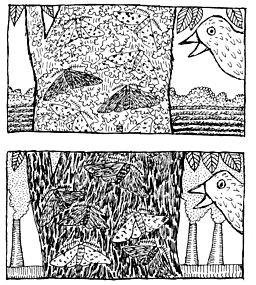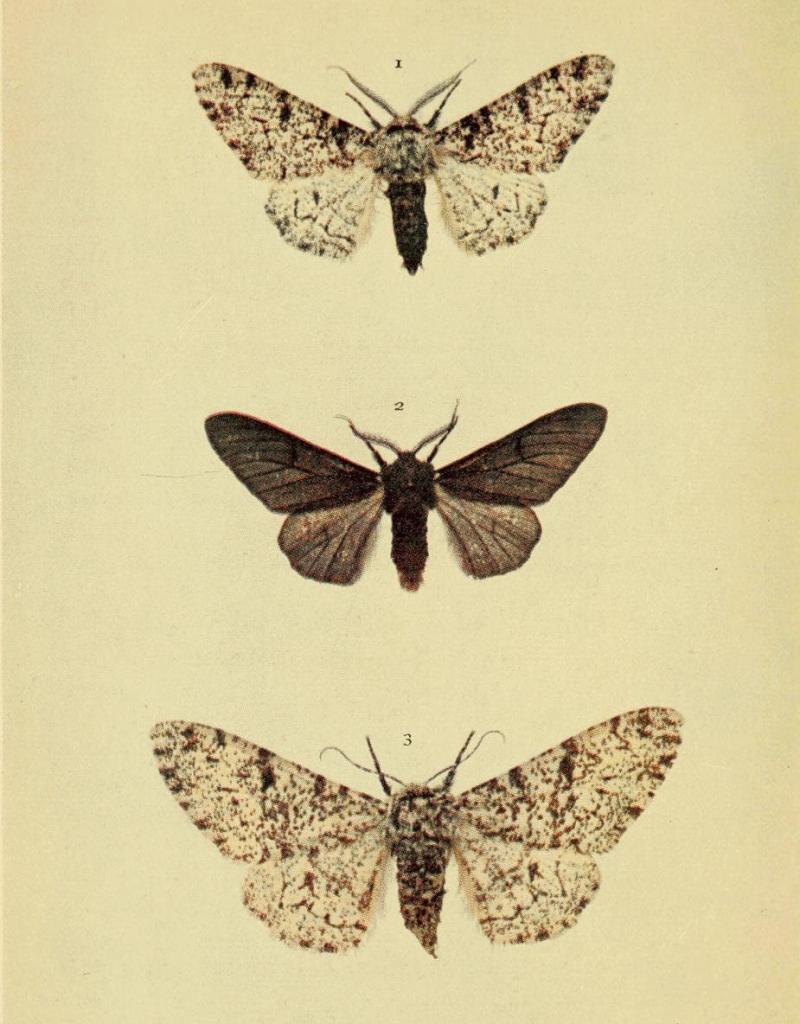I love desktop sticky notes. I use them for everything, including keeping track of ideas for Misconception Monday posts. At the top of the stack is this: “Things that people think are controversial but aren’t (peppered moth, horse evolution, embryos, etc.).” I realize, however, that these topics aren’t exactly misconceptions as much as they are examples of what happens when a little bad journalism or sloppy science runs amok. But they’re still worth talking about, so I’ve opted to go ahead anyway.
Peppered moths. We all know the story, right? There are two color variations among peppered moths (Biston betularia) in England: light (“typica”) and dark (“carbonaria”). Before the Industrial Revolution, the vast majority of moths were of the typica variety. As England became powered by coal and the landscape descended into sooty Dickensian bleakness, there was a major shift. As the trees blackened with soot, the carbonaria variety came to predominate. Then, when the air cleaned up, the distribution of variations shifted back, and the typica moths are once again more common.

So this is classic natural selection, right? Dark moths are easy to see against light trees; light moths are easy to see against dark trees. Pre-soot and post-soot: dark moths = easy prey for birds. Mid-soot: light moths = easy prey for birds. You might say that whether a moth survives predation is a matter of whether it’s sooted to its environment.
A British ecologist, H. B. D. Kettlewell, carried out a series of studies in the 1950s that confirmed these hypotheses. He wrote, "Had Darwin observed industrial melanism he would have seen evolution occurring not in thousands of years but in thousands of days-well within his lifetime. He would have witnessed the consummation and confirmation of his life's work" (Kettlewell 1959:33).
So compelling is this example of evolution by natural selection that it became a textbook staple. Open any biology textbook published before about 2000 and you’re likely to find photos of typica moths and carbonaria moths against either “clean” or sooty tree trunks. The moths in these photos are dead—preserved and stuck onto the tree trunks as part of an experiment to assess the effect of moth density on the feeding behavior of the birds that feed on them (at least according to Bruce Grant, who knows this stuff better than anyone). Unfortunately, some people seized on this perhaps not-exactly-elegant experimental set-up, and cried foul. Kettlewell was called a fraud and a fake, and scientists and textbook developers alike were accused of participating in a conspiracy to trick our children into believing natural selection. The moths became pariahs in some circles.
 But the thing is, there is nothing wrong with the peppered moths as an example of natural selection in action. In the late 1990s, biologist Michael E. N. Majerus re-examined Kettlewell’s work and confirmed all of his major findings. He’s not the only one. Since Kettlewell’s original experiments were published, they have been independently replicated repeatedly. Each time, color variation among moths is linked to differential fitness that affects the distribution of the color trait in the next generation—the very definition of natural selection at work. More recently, the genetic basis for the coloration variation has been uncovered, adding further validation.
But the thing is, there is nothing wrong with the peppered moths as an example of natural selection in action. In the late 1990s, biologist Michael E. N. Majerus re-examined Kettlewell’s work and confirmed all of his major findings. He’s not the only one. Since Kettlewell’s original experiments were published, they have been independently replicated repeatedly. Each time, color variation among moths is linked to differential fitness that affects the distribution of the color trait in the next generation—the very definition of natural selection at work. More recently, the genetic basis for the coloration variation has been uncovered, adding further validation.
Now, this is not to say that there wasn’t room for improvement in many of Kettlewell’s original experiments, but the subsequent studies to test his conclusions have addressed many of these issues. Further, Majerus and others suggest that natural selection may not be the only mechanism at work—that genetic drift may have played a role as well, as moths migrated in and out of the populations under examination. But even that doesn’t invalidate the fundamental conclusion: Without a doubt, evolution is occurring, even if we don’t yet fully understand the details.
So can we remove the stigma yet? Maybe we need to start a campaign…anyone have a good slogan? I’ll make up t-shirts and mugs! “Free the moths!” No, too boring. There’s always “Honk if you love Biston betularia!” or “Got industrial melanism?” could work…ooh, maybe, “Moth without adaptive crypsis: it’s what’s for dinner.”
If you think you can do better, let me know in a comment.
h/t, yet again, to Glenn Branch for his invaluable wit and editing skills.

